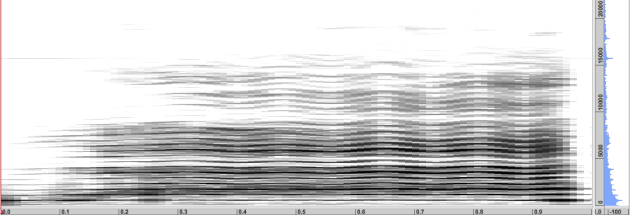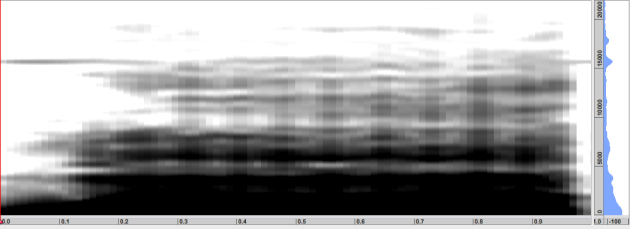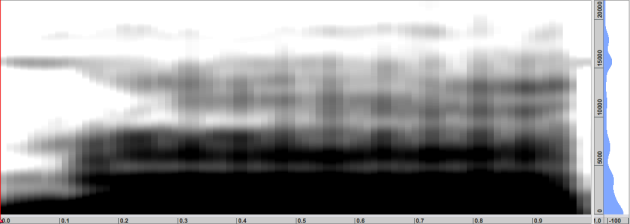- Zoom
True Envelope
The true envelope analysis is designed to improve the results of the LPC. The true envelope is one of the most efficient spectral envelope estimation techniques.
Improving the LPC
With the LPC, it is difficult to obtain an appropriate resonance model – all pole model – for the signal spectrum. A spectral aliasing affects the first harmonics of the spectrum.
Envelope Estimation
The true envelope estimator defines a band limited envelope from a spectrum. An all-pole envelope model is then derived from this envelope.
The true envelope estimation is based on cepstral smoothing of the amplitude spectrum. The algorithm iteratively updates the smoothing input spectrum with the maximum of the original spectrum and the current cepstral representation. The cepstral order, which determines the prominent peaks, can be changed independently for each frame. The band limited interpolation of the spectral peaks performed by the estimator is optimal. | 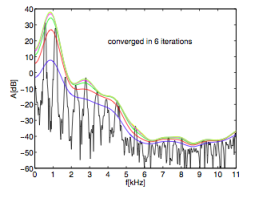 True envelope estimator iterations |
The high order LPC model yields a better representation of the spectral narrow formants which are generally too broad after the band limited interpolation.
The true envelope reduces the impact of the model mismatch of the LPC, with the use of interpolated envelope information. The spectral peaks flatness measure (SPFM) maximization allows to flatten the "valleys" efficiently and follow the partials amplitude precisely. This is especially noticeable in the low frequency band, which is very important from a perceptual point of view. The improvement is bigger for high-pitched signals and is not very sensitive to the model order for the selected order values.
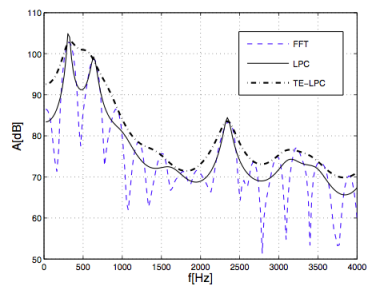
Specific Parameters
By default, the maximum frequency is set to 1000 Hz.
The "true envelope" parameter in the command line must be inferior to SR/(F0 Max*0.5).
Choose the fundamental frequency of the highest pitch.

